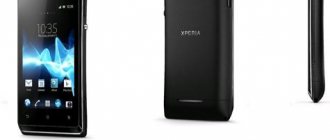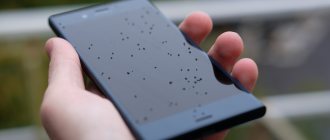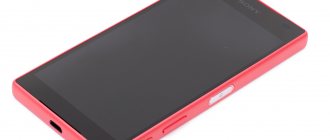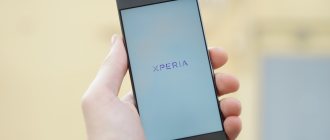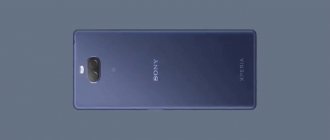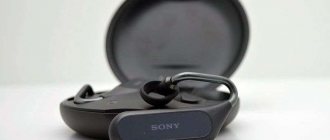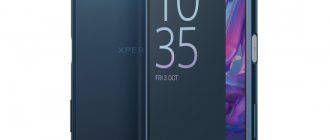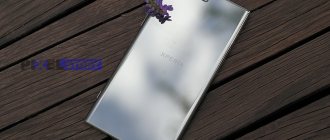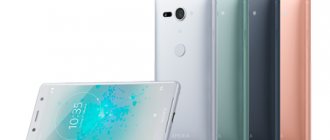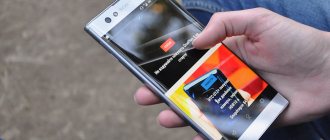We admit: the name alone of the new middle-end smartphone from Sony puts us in a bit of a stupor. Think about it: Xperia M4 Aqua - does anything bother you? For the author of this material, just the name of this gadget raises two questions. First: it’s not clear what the letter M in the name means – is it a class higher or lower than the Xperia T series smartphones? Second question: many Sony smartphones are protected from dust and moisture, but only the M4 has this feature reflected in its name - why is this done? Is this really the main trump card of the gadget, and it has nothing else to boast about? Yes, I remember that the word Aqua was also present in the name of the special modification of the Xperia M2, but it was necessary there - the original version did not have dust and moisture protection. M4, on the contrary, are all protected by default. Let's try to figure it out.
⇡#Technical characteristics
| Sony Xperia M2 | Sony Xperia T3 | Sony Xperia M4 Aqua Dual | |
| Touch screen | 4.8 inches, 540×960 pixels, IPS; Capacitive, up to eight simultaneous touches | 5.3 inches, 720×1280 pixels, IPS; Capacitive, up to nine simultaneous touches | 5 inches, 720×1280 pixels, IPS; Capacitive, up to nine simultaneous touches |
| Air gap | Eat | No | No |
| Oleophobic coating | No | Eat | No |
| Polarizing filter | No | Eat | Eat |
| CPU | Qualcomm Snapdragon 400 MSM8926: four ARM Cortex-A7 cores, 1.2 GHz; ARMv7 instruction set; Process technology: 28 nm | Qualcomm Snapdragon 400 MSM8226: four ARM Cortex-A7 cores, 1.4 GHz; ARMv7 instruction set; Process technology: 28 nm | Qualcomm Snapdragon 615 MSM8939: Quad-core ARM Cortex-A53, 1.11 GHz + Quad-core ARM Cortex-A53, 1.46 GHz; Instruction set ARMv8-A; ARM big.LITTLE technology Process technology: 28 nm |
| Graphics controller | Qualcomm Adreno 305 | Qualcomm Adreno 305 | Qualcomm Adreno 405 |
| RAM | 1 GB | 1 GB | 2 GB |
| Flash memory | 8 GB + microSD | 8 GB + microSD | 8/16 GB + microSD |
| Connectors | 1 × micro-USB 2.0 1 × 3.5 mm headset jack 1 × microSD 1 × Micro-SIM | 1 × micro-USB 2.0 1 × 3.5 mm headset jack 1 × microSD 1 × Micro-SIM | 1 × micro-USB 2.0 1 × 3.5 mm headset jack 1 × microSD 2 × Nano-SIM |
| cellular | 2G/3G/4G One SIM card in Micro-SIM format | 2G/3G/4G One SIM card in Micro-SIM format | 2G/3G/4G Two SIM cards in Nano-SIM format |
| Cellular connection 2G | GSM/GPRS/EDGE 850/900/1800/1900 MHz | GSM/GPRS/EDGE 850/900/1800/1900 MHz | GSM/GPRS/EDGE 850/900/1800/1900 MHz |
| Cellular 3G | DC-HSPA+ (42 Mbps) WCDMA 850/900/1900/2100 MHz | DC-HSPA+ (42 Mbps) WCDMA 850/900/1900/2100 MHz | DC-HSPA+ (42 Mbps) WCDMA 850/900/1900/2100 MHz |
| Cellular 4G | LTE Cat. 4 (150 Mbit/s) FDD-LTE band 1, 3, 5, 7, 8, 20 (2100/1800/2600/900/850/800 MHz) | LTE Cat. 4 (150 Mbit/s) FDD-LTE band 1, 3, 5, 7, 8, 20 (2100/1800/2600/900/850/800 MHz) | LTE Cat. 4 (150 Mbit/s) FDD-LTE band 1, 3, 5, 7, 8, 20 (2100/1800/2600/900/850/800 MHz) |
| WiFi | 802.11a/b/g/n + Wi-Fi Direct | 802.11a/b/g/n + Wi-Fi Direct | 802.11a/b/g/n + Wi-Fi Direct |
| Bluetooth | 4.0 | 4.0 | 4.1 |
| NFC | Eat | Eat | Eat |
| IR port | No | No | No |
| Navigation | GPS, A-GPS, GLONASS, BeiDou | GPS, A-GPS, GLONASS, BeiDou | GPS, A-GPS, GLONASS, BeiDou |
| Sensors | Illumination, proximity, accelerometer/gyroscope, magnetometer (digital compass) | Illumination, proximity, accelerometer/gyroscope, magnetometer (digital compass) | Illumination, proximity, accelerometer/gyroscope, magnetometer (digital compass) |
| Main camera | 8 MP (3264 × 2448), back-illuminated matrix, autofocus, LED flash | 8 MP (3264 × 2448), back-illuminated matrix, autofocus, LED flash | 12.8 MP (4128 × 3096), back-illuminated matrix, autofocus, LED flash |
| Front-camera | 0.3 MP (640 × 480), no autofocus | 0.9 MP (1280 × 720), no autofocus | 5.0 MP (2592 × 1944), no autofocus |
| Nutrition | Non-removable battery: 8.6 Wh (2330 mAh, 3.8 V) | Non-removable battery: 9.5 Wh (2500 mAh, 3.8 V) | Non-removable battery: 9.12 Wh (2400 mAh, 3.8 V) |
| Size | 140 × 71 mm; Case thickness 8.6 mm | 150 × 77 mm; Case thickness 7 mm | 145.5 × 72.5 mm; Case thickness 7.3 mm |
| Weight | 150 g | 148 g | 136 g |
| Protection of the housing from dust and moisture | No* | No | IP65 and IP68 |
| operating system | Android 4.4.2 KitKat Sony's own shell | Android 4.4.2 KitKat Sony's own shell | Android 5.0 Lollipop Sony's own shell |
| recommended price | 10,990 rubles | 13,990 rubles | 19,990 rubles |
* There is a version of the Sony Xperia M2 Aqua, the body of which is protected from dust and moisture according to IP65/68 standards; its average cost is 13 thousand rubles.
| Sony Xperia M4 Aqua Dual – information about the system and hardware according to the CPU-Z application | ||||
Advantages and disadvantages of the Xperia M4 Aqua phone
The dimensions of the Sony Xperia M4 Aqua are 72.59 mm wide, 145.5 mm long and 7.3 mm thick. With such dimensions it is convenient to operate the device with one hand. In addition, the weight of the device is about 136 grams. Even if you operate the device with one hand, its weight is almost not felt.
If we evaluate the overall ease of use of the phone taking into account the size and weight, then there will be no problems with everyday use.
The smartphone is equipped with an 8-core Qualcomm Snapdragon 615 MSM8939 processor, which is manufactured at 28 nm. technical process.
The smartphone has 2 GB. RAM, which is quite enough. In very rare cases it will not be enough, but with this amount of RAM, you will rarely have problems.
The storage capacity of the device is 8 GB, and if the smartphone is mainly used for correspondence and social networks, then there will be no problems, but if you are going to use it for photography, video shooting and games, you should look at a device of a higher class.
The phone is compatible with SD cards, so you can easily expand its memory. So you probably don't need to worry about storage capacity.
The Xperia M4 Aqua has a 5-inch display diagonal. The display is large enough that you will rarely have problems with its size. However, this display is not suitable for writing long texts.
The smartphone has a high-end display and any graphic content you display on it, including videos and games, will be displayed clearly.
The main camera of the phone has 12.98 megapixels and can take high-resolution photos and videos. While you're shooting landscapes or printing high-definition photos, you may want a higher-resolution camera, but most of the time you'll be happy with the camera.
Also, the smartphone has a 4.92 megapixel front camera, which is average for smartphone cameras. This is good enough for taking selfies, but you may not be satisfied with group photos or their print quality.
The battery capacity of the Sony Xperia M4 Aqua is 2400 mAh, which is a typical capacity indicator. Compared to other smartphones, the Sony Xperia M4 Aqua's battery life is average. You don't have to worry about anything during daily use. However, if you spend time surfing the internet or playing games, you might be a little underwhelmed by the battery life.
⇡#Appearance and ergonomics
Testing the M4 Aqua began with a curious incident. The smartphone arrived in our test laboratory at the same time as the flagship Xperia Z3+ and lay in a drawer next to it for some time. When it came time to test, without photos from the Internet we were unable to distinguish where the Z3+ was located and where the M4 Aqua was located - when turned off, these smartphones are very similar to each other, it is very easy to confuse them.
Sony Xperia M4 Aqua Dual
The differences in size between the Z3+ and M4 Aqua are minimal - the latter's body is just a little smaller, eight grams lighter and 0.4 millimeters thicker. Subjectively speaking, using the Aqua with one hand is a little more convenient than using the Zetka. The fact is that its display diagonal is exactly five inches, and not five and a half, like the older model - it turns out that it is a little easier to reach with your finger to the edges.
Sony Xperia M4 Aqua Dual – front panel
There are no hardware keys on the front panel of the smartphone - the buttons here are virtual. Actually, there aren’t too many different elements here at all: in the upper part there is the lens of the front five-megapixel camera, a slot for the earpiece and a sensitive sensor area. At the bottom there is a mesh covering the microphone.
Sony Xperia M4 Aqua Dual – right side
In terms of ergonomics, the gadget is no different from other modern Sony smartphones - the arrangement of connectors and controls is completely standard for a device from this company. There is a round power button on the right side. Its stroke is somewhat soft - it may not be pressed the first time, but these are trifles and quibbles. Next to it are volume control buttons and a hardware photo key. The latter, it should be noted, is very useful when shooting underwater, when the device does not respond to touches on the display.
Sony Xperia M4 Aqua Dual – SIM card slot
At the same end there are slots for two Nano-SIM cards. They are hidden under a plastic plug. Of course, if you plan to immerse the device in water, the plug must be pressed tightly against the body.
Sony Xperia M4 Aqua Dual – side ends
The universal 3.5 mm audio output for connecting a wired headset is located on the top end, and the Micro-USB interface is on the left. It is noteworthy that the latter does not have any plug - the connector itself is waterproof. Sony calls this solution cap-less; it has been used since the Xperia Z3+. There is also a slot for installing a microSD memory card; it is hidden under a flap.
Sony Xperia M4 Aqua Dual – rear panel
The back panel of the smartphone is covered with plastic, not tempered glass, as is done with Sony's flagship models. The plastic, it should be noted, is quite durable: during testing, the smartphone was often carried in the same pocket with the keys, and there was not a scratch on it. True, the surface of the back and front panels is easily soiled - it quickly becomes covered with “fingers” and other fine dirt, and getting rid of them is not so easy. On the back panel there is a main 13-megapixel camera lens and a single LED flash.
Sony Xperia M4 Aqua Dual comes in white, black and pink colors
⇡#Protection from dust and moisture
Sony engineers have been protecting the cases of their smartphones from dust and moisture for several years now – this option in itself in the Xperia series device will not surprise us. It is noteworthy that Sony makes not only smartphones, but also tablets waterproof - that is, the company really has a lot of experience in this area, other “mass” mobile phone manufacturers can hardly boast of this. Another thing is that the company’s older, flagship devices usually receive housings protected from dust and moisture. There are, of course, exceptions like the Xperia M2 Aqua, but they are still quite rare. So the M4 Aqua is one of the few mass-produced mid-price smartphones with dust and moisture protection. In a sense, it can be considered unique - in general, it has no competitors.
Sony Xperia M4 Aqua Dual in the Mediterranean Sea
The smartphone is protected from dust and moisture in accordance with IP65/68 standards, typical for Sony devices. This means that dust cannot get inside the Xperia M4 Aqua at all. Also, the smartphone can be immersed in fresh water to a depth of one meter and kept there for up to half an hour. The manufacturer comments on the security of the smartphone case as follows: “The Xperia M4 Aqua is protected from water and dust, so it is not afraid of heavy rain or washing under the tap (however, remember that all ports and covers must be securely closed). The device must not be completely submerged under water or exposed to sea water, salt water, chlorinated water or liquids such as alcoholic beverages. Incorrect or improper use of the device will void the warranty. The device is assigned protection class IP65/68. For more information, visit www.sonymobile.com/waterproof. Please note that your Xperia device has a USB charging port for connecting to other devices that does not have a cover. If your smartphone has been exposed to water, charge it only after the USB port is completely dry."
Sony Xperia M4 Aqua Dual in the Mediterranean Sea
We admit that while testing the device, we swam with it in both chlorinated and sea water - the smartphone passed such tests without problems. It is noteworthy that we did not just immerse the gadget under water, we kept it there for a long time - once the device floated for as much as fifteen minutes. Absolutely all functions of the device worked normally after immersion in water. Let us note once again that the gadget, of course, does not react in any way to touching the screen under water.
Design
The Sony Xperia M4 Aqua is similar to the flagship Xperia Z3 phone. They are so similar that at first glance it is quite difficult to immediately tell what the difference is between them. And that's great, because both phones are stylish, thin, and impressive to look at. Despite the fact that the Xperia M4 Aqua is equipped with a slightly smaller display (5 inches versus 5.2 inches Z3), the dimensions of the devices are almost identical.
Considering that the Sony Xperia M4 Aqua is sold at half the price of the Z3, there should be a difference here, but in this case it is not noticeable, but rather felt already in use. The M4 Aqua's body is made entirely of plastic, while the Z3's design is made of aluminum and durable glass. The mid-range plastic model does not look as impressive as the flagship case, but, nevertheless, it is quite durable, and the assembly and fitting of parts are at a high level.
There are paired speakers on the front panel; there are no physical buttons. The on-screen keys are used for navigation. All physical buttons are located on the right side of the device: lock/power, volume rocker, two-way camera shutter release. The keys are small, but conveniently located and easy to find.
Sony Xperia M4 Aqua is protected from both dust and water
As is clear from the name of the model, the phone is protected from both dust and water. It is officially certified IP65/68. This ensures that the device can be safely immersed in water up to a depth of 1.5 meters for up to half an hour. But it is worth considering that here we are talking about fresh water (for example, a swimming pool), and not salty sea water. And when diving, all ports must be closed with special plugs.
⇡#Display
The screen on the smartphone is simple - five inches, HD resolution (720 × 1280 pixels). The pixel density is low - just under 294 ppi. In principle, for a mid-priced smartphone this PPI value is quite acceptable, but eyes spoiled by the “printed” picture begin to notice roughness in small fonts. It's easy to see individual dots on the M4 Aqua display - just hold the device close to your eyes. True, the “pixelization” effect in this case is quite moderately expressed - at the distance of a half-bent arm, these same points no longer cause any discomfort.
The device uses an IPS format matrix. It has wide viewing angles - the information on the display remains readable even if you look away from the perpendicular. Thanks to this, you can watch a movie together on the M4 Aqua screen, and your neighbors in a subway car can spy on how you play. The gadget is responsive - it quickly and accurately responds to touches and recognizes gestures without difficulty. In total, the device supports up to nine simultaneous clicks - the device did not see the standard ten fingers, no matter how hard we tried. The Sony Xperia M4 Auqa has a special switchable “glove mode” that increases the sensitivity of the touch layer.
Sony Xperia M4 Aqua Dual – AnTuTu MultiTouch Test results
The front panel of the smartphone is covered with a sheet of tempered glass, which generally successfully resists scratches and other damage. Sony, as usual, does not name the glass manufacturer. To prevent the M4 Aqua from competing with older smartphones, the glass was stripped of its oleophobic coating, making it not very pleasant to the touch. In this case, associations with window glass are still far away, but still its surface is quickly covered with “fingers” and other dirt, which are not as easy to get rid of as we would like.
The display has a large brightness reserve: the maximum luminosity of the white field on the M4 Aqua screen is 487 cd/m2. Well, since the display has a very effective polarizing filter, we can safely say that the smartphone is easy to work with in any conditions - the display does not fade even in direct sunlight. Which is what we were happy about, lying on the beach with him. True, due to the high maximum brightness, the minimum level of screen backlight is somewhat “high” - 37 cd/m2. This value is on the border of what is comfortable when working with the device in the dark. Any more and it would be unpleasant for the eyes to look at the display. The gadget is equipped with a light sensor, thanks to which the device can independently set a brightness level that is comfortable for working in various conditions. It works quite correctly and accurately, without jerking.
The luminosity of the black field, despite the overall high brightness, is quite moderate - 0.46 cd/m2 (in this case, less is better). Blacks look quite deep and convincing even with the maximum backlight level; there is no deviation to dark gray or dark purple. The contrast of the display is very decent – 1058:1.
Sony Xperia M4 Aqua Dual – grayscale color temperature
The color temperature of shades of gray on a smartphone screen, traditionally for Sony, is slightly higher than normal. On average, it is 7750 K versus the reference 6500 K. Because of this, the picture on the M4 Aqua display looks a little colder than it should, and attentive users will pay attention to this. Of course, this does not interfere with working with the device, but there is something to complain about. Perfectionists can adjust the white balance to suit themselves using a special utility in the settings menu.
| Sony Xperia M4 Aqua Dual – display settings | ||
However, the rest of the screen is set up very, very well - it displays halftones correctly. All gamma curves - both gray and color components - coincide with the reference curve. This means that the colors on the M4 Aqua's screen are exactly as vibrant as they should be - without any bleeding or bleeding. So overall the display is set up well.
| Sony Xperia M4 Aqua Dual - gray gamma curve (left) and color components (right) compared to the reference curve | ||
Sony xperia m4 aqua dual display
The screen matrix is built using IPS technology and displays bright, saturated colors without fading during use.
The diagonal of the useful part is 5 inches, and the pixel density is 294 ppi, which is a common indicator with an average value of 326.25 ppi among competitors. This pixel density is quite sufficient to not notice the pixels on the screen.
The usable screen area is 65.46% in relation to the phone body. This indicator is the maximum indicator.
77.14% is the average ratio of display area to body of smartphones in 2017-2020.
796.48% is the best display-to-device ratio for 2020.
⇡#Hardware and performance
As we said in the announcement, the smartphone is equipped with a relatively new mid-range system-on-chip from Qualcomm - Snapdragon 615. This is ARM big.LITTLE, or rather ARM LITTLE.LITTLE: it includes two groups of cores, four cores each . It is noteworthy that all eight cores are nominally the same - Cortex-A53, but four of them operate at 1.1 GHz, and the other four at 1.5 GHz. The modern ARMv8-a instruction set is used, thanks to which the device supports 64-bit computing. The chip itself is made using a standard 28nm process technology.
The device has two gigabytes of RAM. This amount of RAM is quite enough for comfortable web surfing and quick switching between open browser tabs. The gadget easily stores many open applications in memory. The built-in storage capacity is eight or sixteen gigabytes, depending on the version. We received a modification with 16 GB of built-in flash memory for testing, of which about eleven are available to the user.
In everyday use, the M4 Aqua behaves quite well - it practically does not slow down and does not stumble out of the blue. Yes, the device may hesitate when launching a resource-intensive application, but this does not happen very often and does not cause irritation. In the general synthetic test AnTuTu Benchmark 5, the gadget scored almost 34 thousand points - an acceptable result for a mid-priced smartphone.
The role of the graphics controller in the Snapdragon 615 is played by the Qualcomm Adreno 405 module. This is an average-power solution; you can’t expect any miracles from it in terms of performance. True, those who like to play on a smartphone will benefit greatly from the fact that the M4 Aqua has a low-resolution display - rendering a picture for an HD screen is much easier than for some Full HD or - even worse - Quad HD. Therefore, toys on the Aqua work without a drop in frame rate. Even resource-intensive gaming tests like GFXBench 3 were displayed quite smoothly.
Sony Xperia M4 Aqua is a prime example of a balanced device. Yes, it does not have the most powerful system-on-chip installed, but its capabilities are more than enough to ensure high speed and smooth operation in this smartphone. The device copes well with multimedia tasks, and with gaming tasks, and in general with everything that a mobile device can be asked to solve. And a Full HD screen... is a Full HD screen really necessary?
Processor and memory
Sony Xperia M4 Aqua runs on Qualcomm Snapdragon 615. This is a 64-bit chip with eight Cortex A53 cores. It operates at a frequency of 1.5 GHz, has 2 GB of RAM and an Adreno 405 GPU.
The figures are relatively low. It is natural to have concerns about slowing down in your work. However, the phone actually works great. Menu navigation is fast and smooth. There are no delays in applications. The exception is the camera application, but even there the “lags” are more likely hardware rather than software, but more on that later.
The device did not show impressive results in performance tests. But it is worth remembering that benchmarks in such tests are not always actual confirmation of good performance. And the most important next question: how did the device perform in everyday use? Here you can give the device a solid “good”.
Xperia M4 is not very powerful but decent
The Adreno 405 GPU graphics chip is not particularly powerful. But combined with a screen that is not too high in resolution, it handles most games just fine. Shooters often run at slightly lower frame rates, but are still quite acceptable. There were no problems at all with the rest of the games.
The phone's internal memory is a bit tight - only 8 GB. Of these, less than 6 are available for personal use. But, fortunately, the device supports expansion up to 128 GB using a microSD card.
⇡#Communication and wireless interfaces
There are two versions of M4 Aqua on the market - with one and with two SIM cards. It is very easy to distinguish them from each other - the latter has the word Dual in its name. It was she who turned out to be our test. Otherwise, the modifications are completely identical. Working with two SIM cards is implemented in a completely standard way: the user only needs to install SIM cards in the device and designate which one to call by default, which one to send messages and access the Internet. The call and SMS log shows which card was active, so you won’t be able to get lost in them. In the settings, you can assign names to them to make it easier to navigate. It is noteworthy that one of the SIM cards will be able to transmit data in LTE networks, while the user himself determines which of the cards will work in fourth-generation networks in the settings menu. The maximum theoretical data reception speed via mobile networks is 150 Mbit/s (LTE Cat. 4). Of course, in reality it is lower and depends on many factors.
Sony Xperia M4 Aqua Dual – SIM card settings
To be honest, the device copes with voice calls with variable success. The interlocutors periodically complained about poor hearing - every now and then they had to bring the smartphone closer to their mouth. We hope this is a defect in our test unit. Nevertheless, such a problem did occur - check if you decide to buy. The volume reserve of the conversational speaker, on the contrary, is quite sufficient - the interlocutor can be heard well even in noisy places.
| Sony Xperia M4 Aqua Dual – AndroiTS GPS Test results outdoors | ||
The device has an exhaustive set of wireless interfaces: the gadget supports dual-frequency Wi-Fi of all popular protocols, Bluetooth 4.1 and NFC. For a complete set, the only thing missing is an infrared port, but it is usually only available on flagship models, so we won’t consider its absence as a drawback. All modules work stably, without failures. A module that can communicate with GPS, GLONASS and BeiDou satellites is responsible for navigation in the device. The device navigates the terrain quite quickly. Half a minute after launching the profile test, the gadget detected eleven satellites, but was guided by only four of them (possibly due to bad weather during the test). The navigation error radius was moderate - 13 meters. The gadget copes well with the role of a car navigator - it did not let the author of this article down during testing.
⇡#Camera
The front camera in the device is five megapixels, which is good - previous budget Sony smartphones had much more modest front cameras. True, there is no autofocus, but it takes pictures very well without it. With its help, you can take decent self-portraits not only during the day, but also in dim room lighting. Of course, the picture comes out with artifacts, but the essence remains quite clear and readable – and for a front-facing camera this is, perhaps, the most important thing. The M4 Aqua is quite convenient to talk to video. Let us remind you that the recently announced, but not yet on sale Xperia M5 boasts a front camera of as much as 13 megapixels - and this is its main difference from the M4 Aqua.
Sony Xperia M4 Aqua Dual – main camera
The rear camera in the M4 Aqua is 13 megapixels. It is equipped with autofocus and a single LED flash. The current generation Sony Exmor RS backlight sensor is used. With sufficient lighting, you can use it to take very good photographs - rich, contrasting and detailed. Sharpness is uniform across the entire frame. The device focuses on the subject quite quickly. True, as shooting conditions deteriorate, the quality also drops noticeably. The noise reduction here is too aggressive - it loses details; autofocus periodically misses. In addition, the main camera of the smartphone is afraid of backlight and does not know how to work with it - it makes mistakes with both white balance and shutter speed (allows significant “dips” in the shadows; they can be dealt with using the HDR mode).
Sony Xperia M4 Aqua Dual
View all images (16)
As for shooting underwater, you shouldn’t seriously consider this possibility – it’s just a nice bonus, nothing more. The fact is that underwater the smartphone screen does not respond to touches, because of this it is not possible to specify the focus area by pressing. All work with the camera is carried out using a single hardware key on the right side of the device. Of course, you can “catch” the subject in the center of the viewfinder, focus on it, move the camera and only then take a photo, but doing all this underwater is not very convenient.
| Sony Xperia M4 Aqua Dual - examples of photos taken underwater | ||
⇡#Autonomous work
Sony marketers on the company's official website promise that the M4 Aqua Dual can work autonomously, that is, without charging, for up to two days. As you know, modern smartphones usually “live” for a working day, a day at most, then they must be charged without fail. Sony promises longer battery life. Strange, why would they do that? There are no prerequisites for this - the battery in the device is quite standard, 9.12 Wh (2400 mAh, 3.8 V). For many competitors it is “fattier” – under three thousand milliamp-hours. Indeed, with active use, including as a music player and car navigator, the batteries of the Sony Xperia M4 Aqua Dual last for a working day - not even a day. During testing, the smartphone heroically survived until it arrived home, but immediately categorically insisted on charging. So we can’t talk about outstanding battery life - unfortunately, it’s quite standard here.
| Sony Xperia M4 Aqua Dual – power saving options | ||
The life of a smartphone battery can be extended by activating a software energy saving algorithm called STAMINA. When enabled, it limits the maximum processor power and prevents background data transfer. Among other things, the device has a standard “low charge” mode, which, when activated, disables a number of power-hungry options, reduces the backlight level and reduces the time before the screen turns off. Moreover, for emergency situations, there is an Ultra STAMINA mode, which disables all “smart” functions and turns the smartphone into a very ordinary phone, allowing you to only make calls and send SMS.
In continuous HD video playback mode at maximum screen brightness, with an active Wi-Fi connection and data updating in the background, the device lasted for almost seven hours. A very good result - you can watch movies on your smartphone, for example, during the entire long flight. However, if you load the gadget with some kind of toy, the battery will begin to discharge much faster.
Battery life
Despite the strong external similarity with the flagship Z3, when it comes to battery capacity, the difference is significant. Sony Xperia M4 Aqua is equipped with a 2400 mAh battery. And yet the company claims that it will last for 2 days. We decided to check this indicator.
The screen backlight was set to 200 nits during the test. The phone was used almost constantly - the discharge time was 6 hours and 22 minutes. The figure is not very impressive. The flagship with a more capacious battery and higher power consumption lasted almost one and a half times longer.
As for charging, from full discharge to 100% using a 0.85A - 5V device, the phone charges in 2 hours 55 minutes.
